There is an immense number of ways in which the Celtic knot, also known as the Irish knot, can be used. I have discussed this many times in my main article on Celtic Symbols.
Today, I am going to break down the meaning of the Celtic Knot. Along with that, there are various ways a Celtic knot can exist. Celtic knots and meanings come in different shapes and forms, and I will share eight different types.
So, if you are possibly looking for that next Celtic tattoo, Celtic art piece, Celtic clothing or even wedding rings, I will make sure that you can make the best decision.
But more importantly, you will learn about the great Celtic civilisation. You can find remnants of it everywhere you look. Celtic knot designs have been documented as early as the third century A.D., as evidenced by their presence on Roman floor mosaics.
Not just in Ireland but around the world in many shapes and designs. It is truly an ancient Celtic symbol. The Celts genuinely hold a special place in history; through this, I am going to break down the Celtic Knot.
From the romantic Celtic Love knot to the mysterious Spiral Knot, I will delve into the fascinating world of these ancient symbols.
And if you are wondering just what the Celtic meaning is, you describe something as Celtic; you mean that it is connected with the people and the culture of Scotland, Wales, Ireland, and some other areas such as Brittany.
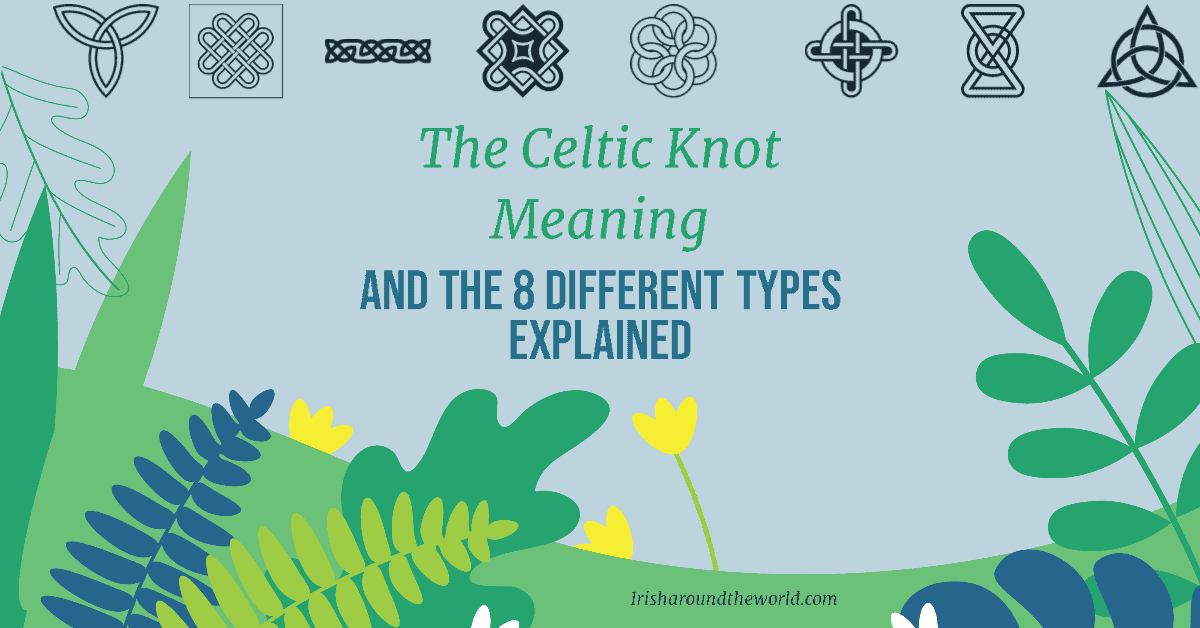
Did you know there are over eight basic variations of the Celtic Knot!?
These were based on three and four-chord plaits. There is no shortage of books on the topic.
- Including the Trinity knot, Celtic Love knot, Celtic Cross, Spiral Knot, Celtic Shield knot, Dara knot, Solomon’s knot and the Celtic Sailor’s knot.
Yes, there are many variations of the Celtic knot. But if you are thinking about a Celtic Tattoo, why not understand the meaning so you can wow your friends who ask, “Is that a Celtic knot?
But of course, we know it’s a ‘knot’ (see what I did there?) just in tattoos and in plenty of jewellery designs.
The most typical being rings, pendants and necklaces.
But what exactly is a Celtic knot?
Glad you asked! These knots are complete loops that have no start or finish. There is also plenty of Celtic knot patterns.
They could be said to represent eternity, whether this means loyalty, faith, friendship or love.
So, if you were to create or draw a Celtic knot, you would have one start point and eventually finish back where you started, which symbolizes how life and eternity are interconnected.
The Celts were indeed a wise bunch.
- Celtic knots are found in the Book of Kells(seen below), 8th century St. Teilo Gospels and the Lindisfarne Gospels.
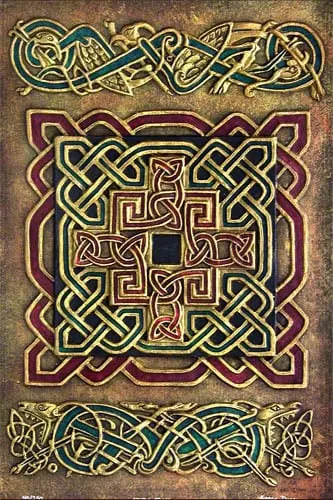
The book of Kells was written in Latin and stored safely in Dublin. Clear evidence of a Celtic Knot. It was created around 800AD.
- It spread like wildfire after that. Heck, even in the Roman Empire, there is evidence of handicrafts with Celtic knots interwoven onto them.
- Quickly followed up in the 3rd and 4th Centuries with floor patterns to architecture, even spreading into Islamic art and Byzantine architecture.
So yes, while that may look just like a pretty necklace or a leg tattoo, you are wearing a piece of history.
Some historians even believe Celtic knots could date back as far as 500 B.C. However, when looking into this further, the evidence is vague to back up their claims.
But that being said, anything from B.C. lacks a lot of proof. It was over 2000 years ago, after all!
The different types of Celtic knots
Great, now you know a bit of the history behind the various types.
Now let’s break down the eight main types of Celtic knots and what they mean(or at least can be interpreted to mean.)
1. Trinity Celtic knot(Triquetra)
The first and probably the most popular of all Celtic Knots!
You will likely be most familiar with this one, even if you didn’t know it!
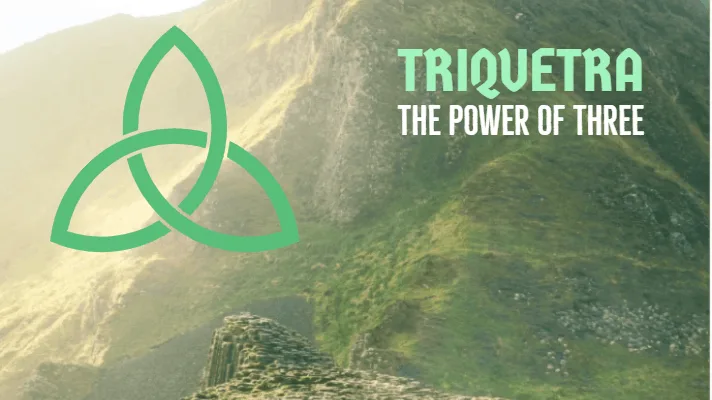
It appeared recently in modern-day movies such as Thor’s Hammer (see below), and even the old TV series Charmed.
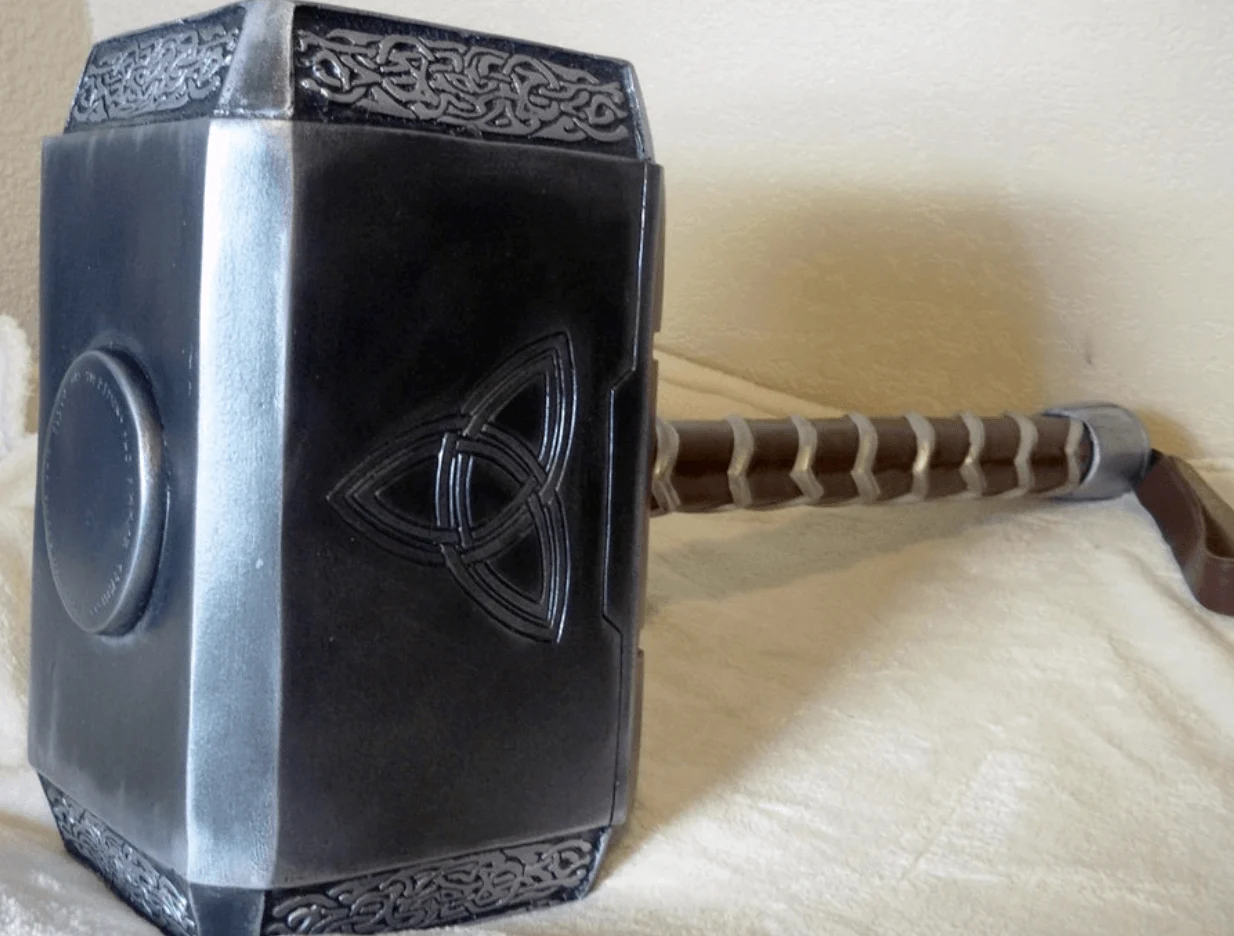
Thor’s Hammer
The Triquetra is a Latin word meaning “triangular” or “three-cornered.”
In its purest form, the triquetra is three interconnected ovals — one pointing upward, the other two pointing down, to the left and right.
I actually wrote a more in-depth article on the Trinity Knot here. It is the most spoken about, so I felt it required additional research.
What does it mean?
Meant initially as “triangle”, it was used to refer to various three-cornered shapes.
Sometimes, the traditional triquetra symbol is accompanied by a circle.
As previously mentioned in the Celtic Tree of Life, the Celts favoured that everything in this world came in threes.
For example:
- Three stages of life: life, death, and rebirth
- Three elements: the Father, the Son, and the Holy Spirit
- Three domains: earth, sea and sky, past, present and future.
2. Celtic Spiral Knot
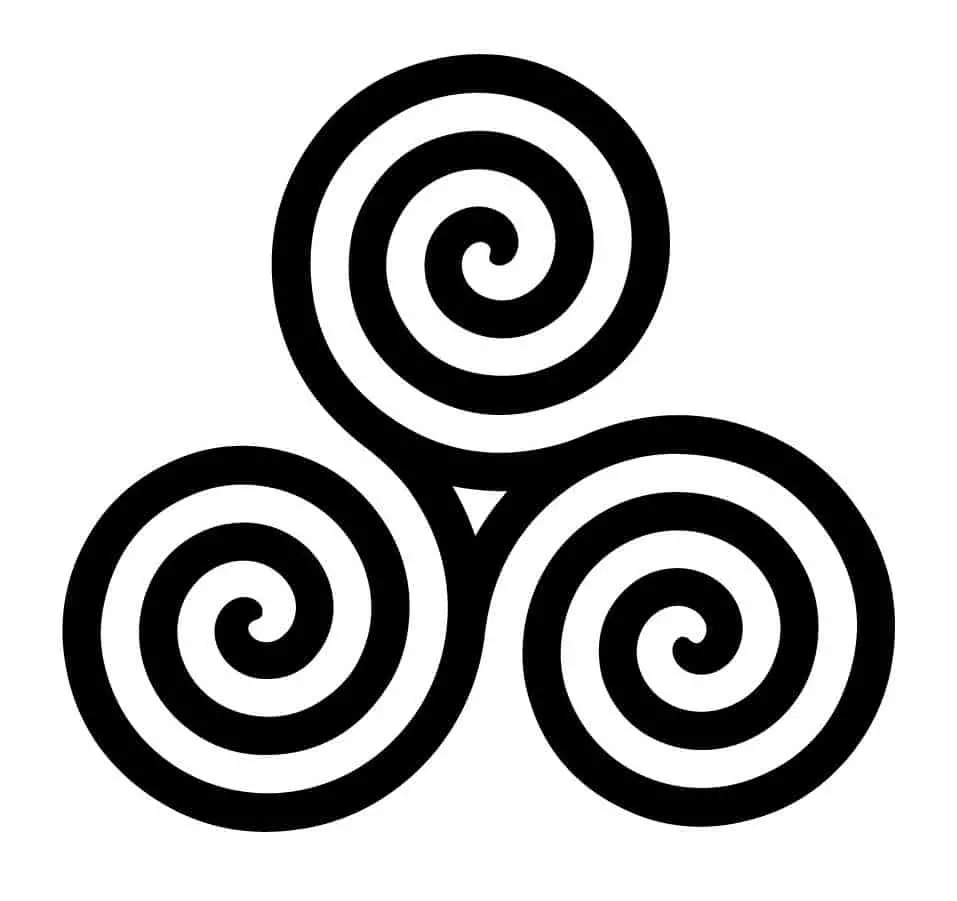
Mesmerising, isn’t it?
Said to mean eternal life and is believed to be one of the oldest Celtic designs.
This is another three-sided knot that stands for water, fire and earth, which are the forces of nature.
These designs feature a single continuous line that represents the oneness of spirit and unity.
In the Neolithic Age of Europe, it was common to see single and double spirals on temples and other European monuments.
The whirls of the spiral stand for continuous growth, while the gaps between the rings stand for the gaps between life, death, and rebirth.
Of course, it is down to your own interpretation and what it means to you with all of these symbols.
3. Sailor’s Celtic knot
I must say I like this one. It just reminds me of the patterns that I have seen somewhere or designs. It might be strange to say, but we all have a favourite Celtic symbol, yours? Comment at the end and let me know.
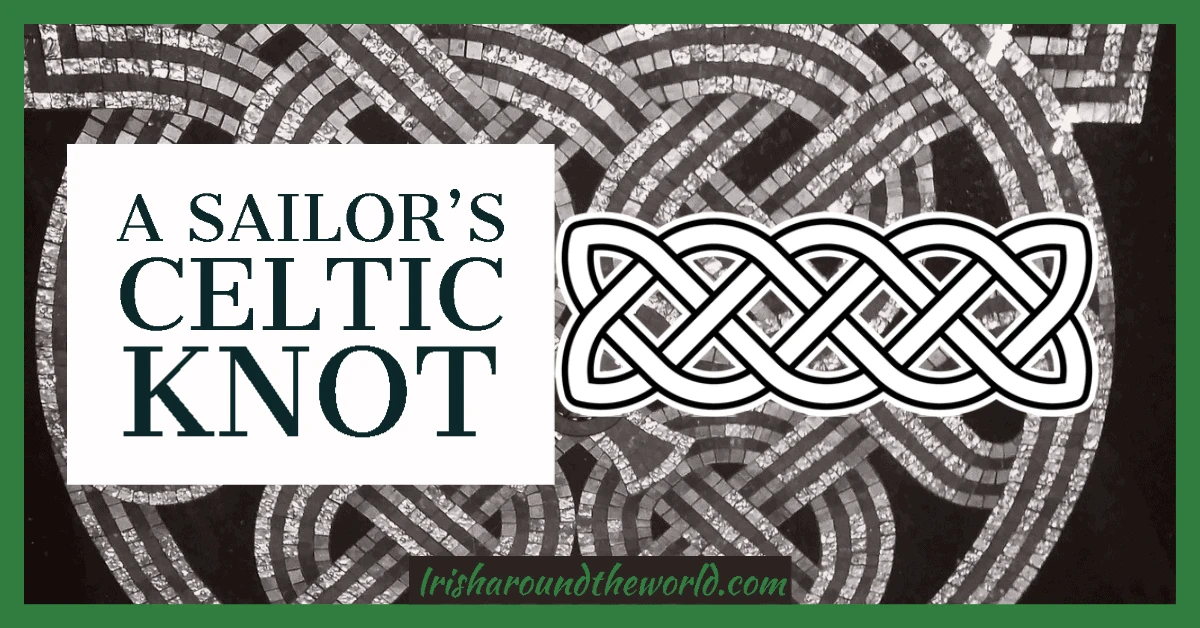
The theory behind this Celtic knot is that the two ropes intertwined were created by sailors.
Either during long voyages or while waiting for their following passage. Said to be a means for remembering their loved ones.
What I like about this knot is that while it is the simplest to make or draw, it is actually one of the strongest. A bond that cannot be broken.
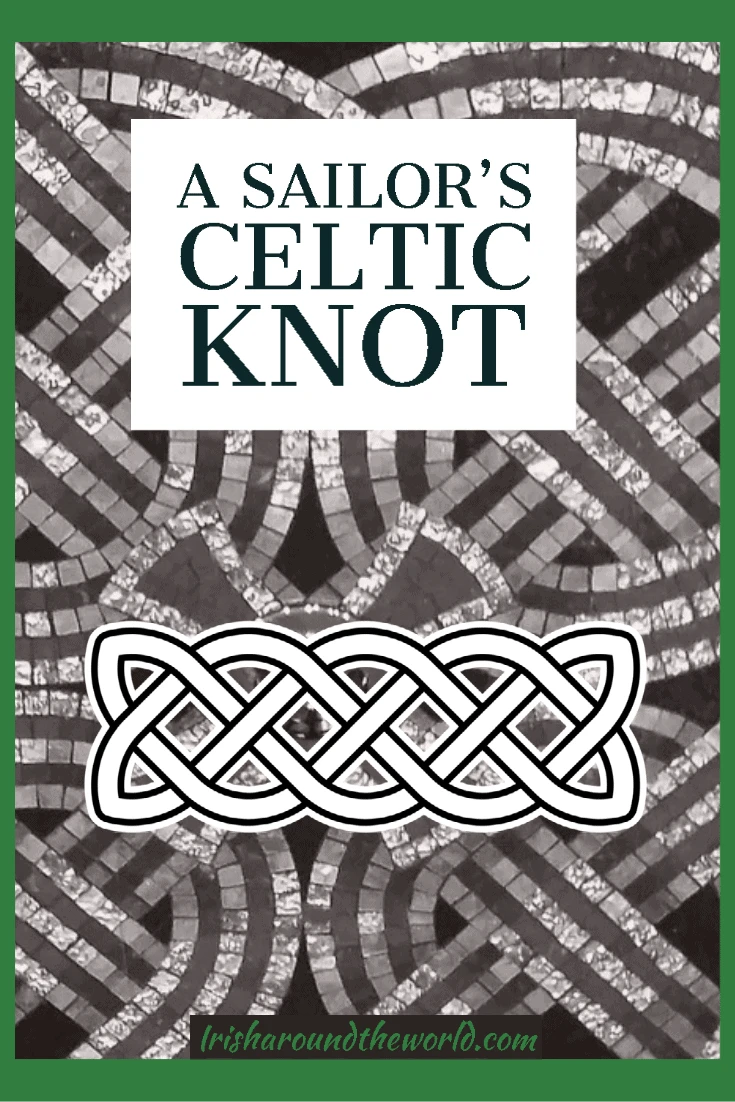
PIN ME
4. Dara knot (Oak Tree Knot)
I just recently included this in my main Celtic symbols article, and I just had to also speak about it here.
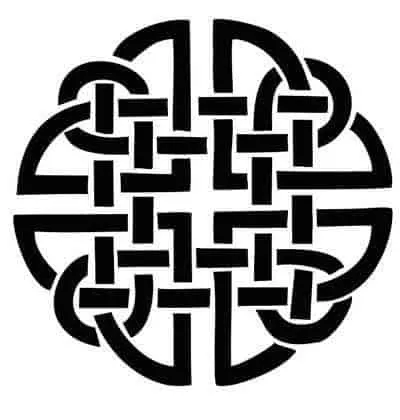
A basic Dara Knot – The Celtic Symbol for Strength
Dara’s name comes from the word “doire,” which is the Irish word for “oak tree.”
Trees for the Celts connected the world of the spirits and the ancestors, living entities, and doorways into other worlds.
The most sacred tree of all was the Oaktree. The Dara knot is a modern creation, but it is designed with Celtic knot traditions in mind.
The intertwined lines have no beginning or end. This is known as the Celtic symbol for strength because of the analogy that we all have our own roots, and this symbol rises from the roots and has no end. Again they were a wise bunch.
5. Shield knot
Moving from the previous Dara knot for strength onto the next one, which is the shield knot.
The Shield knot, as the name suggests, is the Celtic symbol for protection. It was placed either on battlefields or close to sick people to ward off evil spirits.
While there is a whole bunch of ways that you can design this Celtic knot, you will always find four distinct corners. The tight patterns depict an unbreakable barrier.
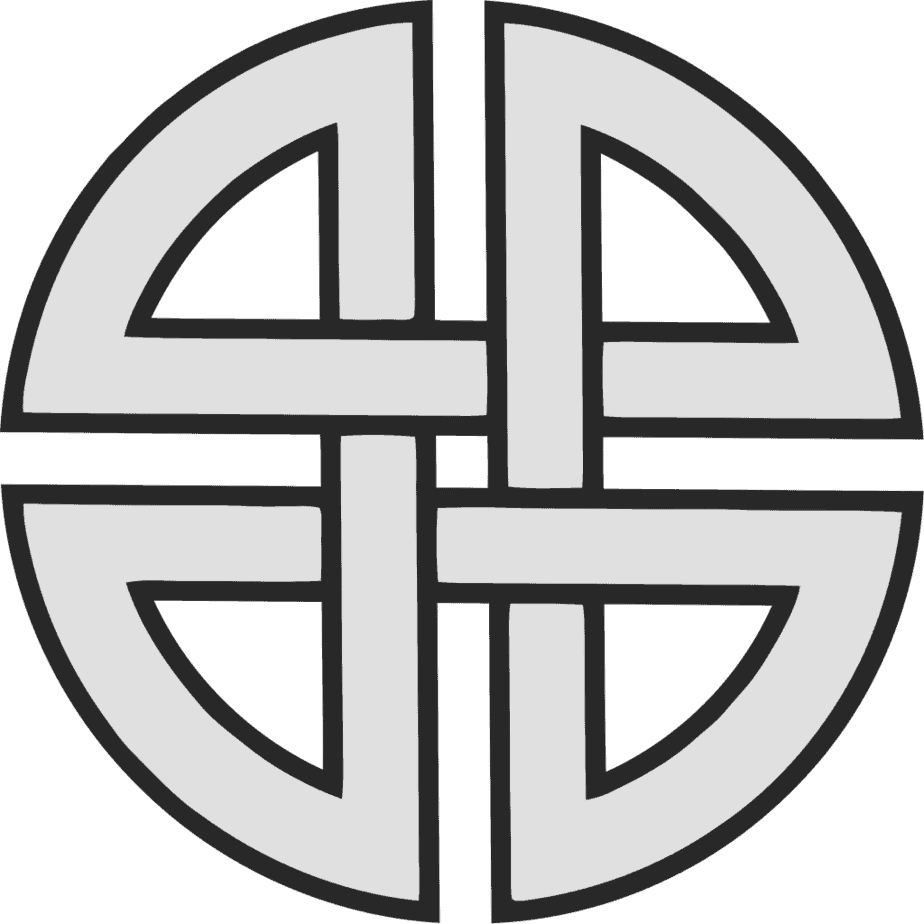
You can clearly see this basic Shield knot along with the main four corners.
6. Celtic Cross
Well, this could be argued as the most popular Celtic knot. However, I still think that the Trinity Knot(Triquetra) surpasses it.
Again with this Celtic symbol, I have created a more in-depth blog post about it here.
But I have included a summary below for you. You might also be interested in reading how one man actually planted this symbol. I explain the story in this blog post, but you can see the image below! Wow.
In recent years the cross has been popularised in many Irish symbolic tattoos. The true origins of the Celtic cross are unknown, but there is plenty of theories and legends.
One popular theory is that the cross was introduced by St Patrick when he was converting the pagans in Ireland to Christianity.
It is a Celtic symbol of both culture and faith.
The cross has a few variations, but typically you will always be able to make out the cross symbol.
What is the Celtic Cross meaning?
By exact definition, an Irish Cross or Celtic Cross has to have four semi-circles cut away at the four points where the horizontal and vertical beams meet.
It is also a common trait that the lower vertical section is wider at the base than at the point where it meets the centre, while the other sections are rectangular.
Neither of these is strictly adhered to in modern symbols. You can also read about the main differences between the Celtic Cross and the Sun Cross here.
7. Solomon’s knot
Well, we are coming closer to the end of this post. I hope you have been enjoying it so far, be sure to share this post if you can.
Solomons knot is not so popular in the modern-day but is, in fact, one of the oldest symbols you can find. Even found in stone age carvings! Believed to represent the union of a man and the divine. This symbol can actually be found in nearly every single major civilization.
The reason behind the name Solomon is its frequent appearance in several ancient synagogues linked with King Solomon.
Like many of the other Celtic knots, it has no beginning or end, and it makes for a symbol of eternal and immortality. While the design of two entwined figures makes the know a symbol of love. Just like in the Claddagh ring.
In wrapping up our exploration, Solomon’s knot stands out as a truly ancient and universal emblem. Found in carvings dating back to the Stone Age and across multiple civilizations, its intricate design speaks of the union between humanity and the divine.
Named for its association with King Solomon, this knot, with no beginning or end, symbolizes eternity and immortality.
Its design of intertwined figures also makes it a poignant emblem of love, reminiscent of the sentiment in the Claddagh ring. Just as with all Celtic knots, Solomon’s knot serves as a bridge between historical traditions and modern interpretations, reminding us of the intertwined nature of our existence.
8. Celtic Love Knot(also known as the Celtic heart)
Ah, sure, why not finish the top 8 Celtic knots with some love? This design features interlocked knots and represents the love between two people.
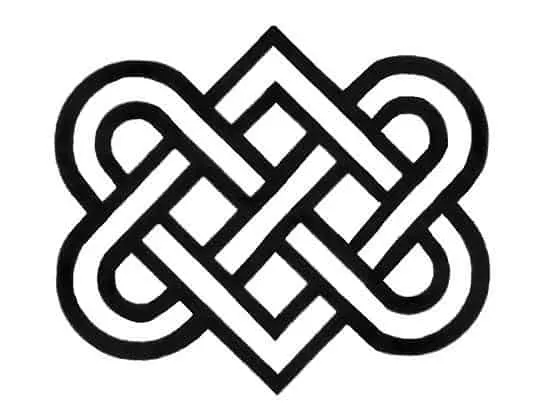
It is believed that the Celts exchanged these knots in much the same way as we exchanged rings in the modern age. The Celtic love knot is one of the oldest and simplest designs.
This design features interlaced knots and represents the love between two people. It is believed that the Celts exchanged these knots in much the same way as we exchange rings in the modern age.
The addition of Celtic patterns among these Celtic knots:
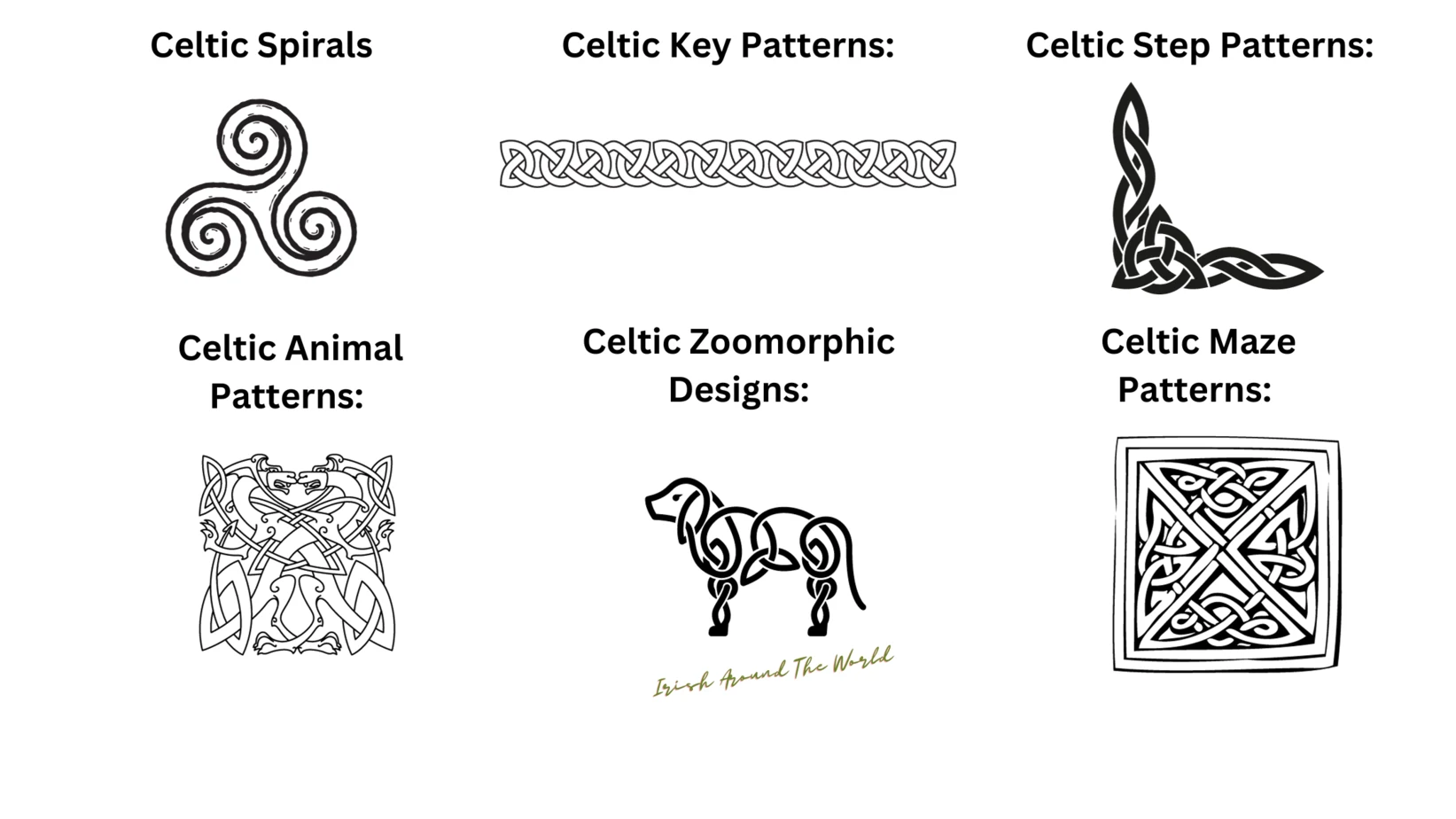
While I’ve talked extensively about Celtic knots, it’s essential to recognize that the Celts were masters of various other patterns and designs. These Celtic patterns were not just mere decorations; they were symbolic representations and storytelling mediums of the Celtic worldview.
- Celtic Spirals: One of the earliest patterns used by the Celts, spirals can be found on ancient monuments like Newgrange in Ireland. They are thought to represent life-death-rebirth cycles, the sun, and the cosmos. Double and triple spirals have also been found, symbolizing the concept of duality and trinity in life.
- Celtic Key Patterns: Resembling a labyrinth or maze, key patterns are comprised of interlocking shapes that can go on infinitely. They represent the complexity and interconnectedness of life and eternity.
- Celtic Step Patterns: These are sequences of right angles connected and carved into stone. Step patterns are often compared to life’s path with its many twists, turns, and the constant dance between order and chaos.
- Celtic Animal Patterns: The Celts had a profound connection with nature, and this is reflected in their art. Birds, dogs, boars, and other creatures were often intertwined in intricate designs. Each animal had its symbolism. For instance, the boar represented courage and ferocity, while the bird symbolized the transcendence of the soul.
- Celtic Zoomorphic Designs: This style integrates animal forms and knotwork, with animals often depicted in the middle of transformation or in various intertwined forms. These designs often symbolized the fluidity and transient nature of life.
- Celtic Maze Patterns: Similar to the key patterns but with a more complex design, maze patterns represented life’s journey, with its intricate paths, choices, and challenges.
When you look at a Celtic pattern, it’s like reading a chapter from an ancient book. Every twist, turn, and interlocking shape has a story, a symbolism, and a piece of history.
It’s a testament to the Celts’ deep spiritual connection with the world and their keen observations of nature and life.
Conclusion of the Celtic Knots and their Meanings
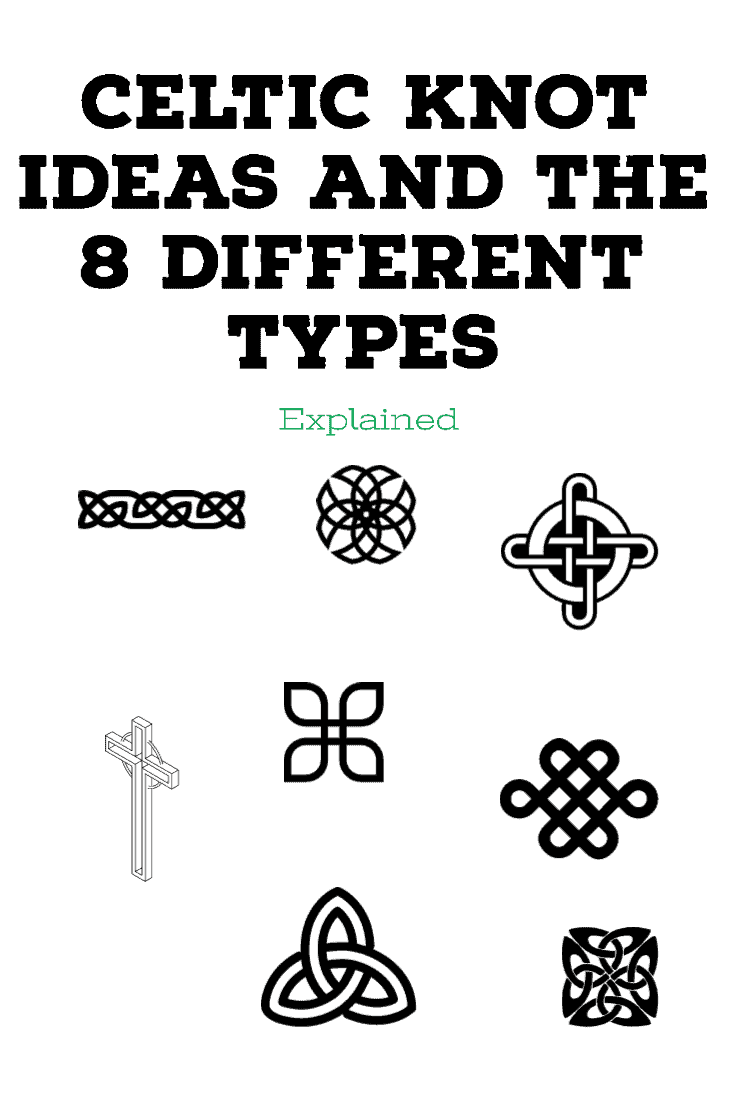
Well, now, I hope you have enjoyed this post. I am sure by now you know the meaning of all the different types of Celtic Knots. It certainly took me a long time to put it together, and of course, there will be many differences in opinions regarding any symbology.
Just know that whatever symbol you choose to represent a Celtic knot, it is for you and not for anyone else. Well, unless a love knot, of course.
Symbols are symbols, and what you choose them to mean to you is what is important.
Even now, in modern times, the Celtic knot stands tall as the ultimate Celtic symbol. With its intricate interlacing patterns, it’s like a mischievous riddle just waiting to be untangled by the brave souls who dare to try.
Whether you see it as a symbol of eternal love or simply an elaborate way to tie your shoelaces, one thing is certain: the Celtic knot will forever keep us entertained. There are also even more variations, and every day more continue to pop up, like the Celtic Bird knot and Celtic serpent knot. If you would like to learn more about Celtic symbols, read this post.
I encourage you to share this article and subscribe to my weekly dose of Irish newsletter.
Thank you very much for sticking around, and have a great day!
Stephen Palmer
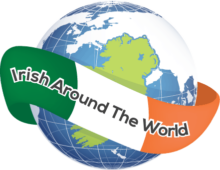
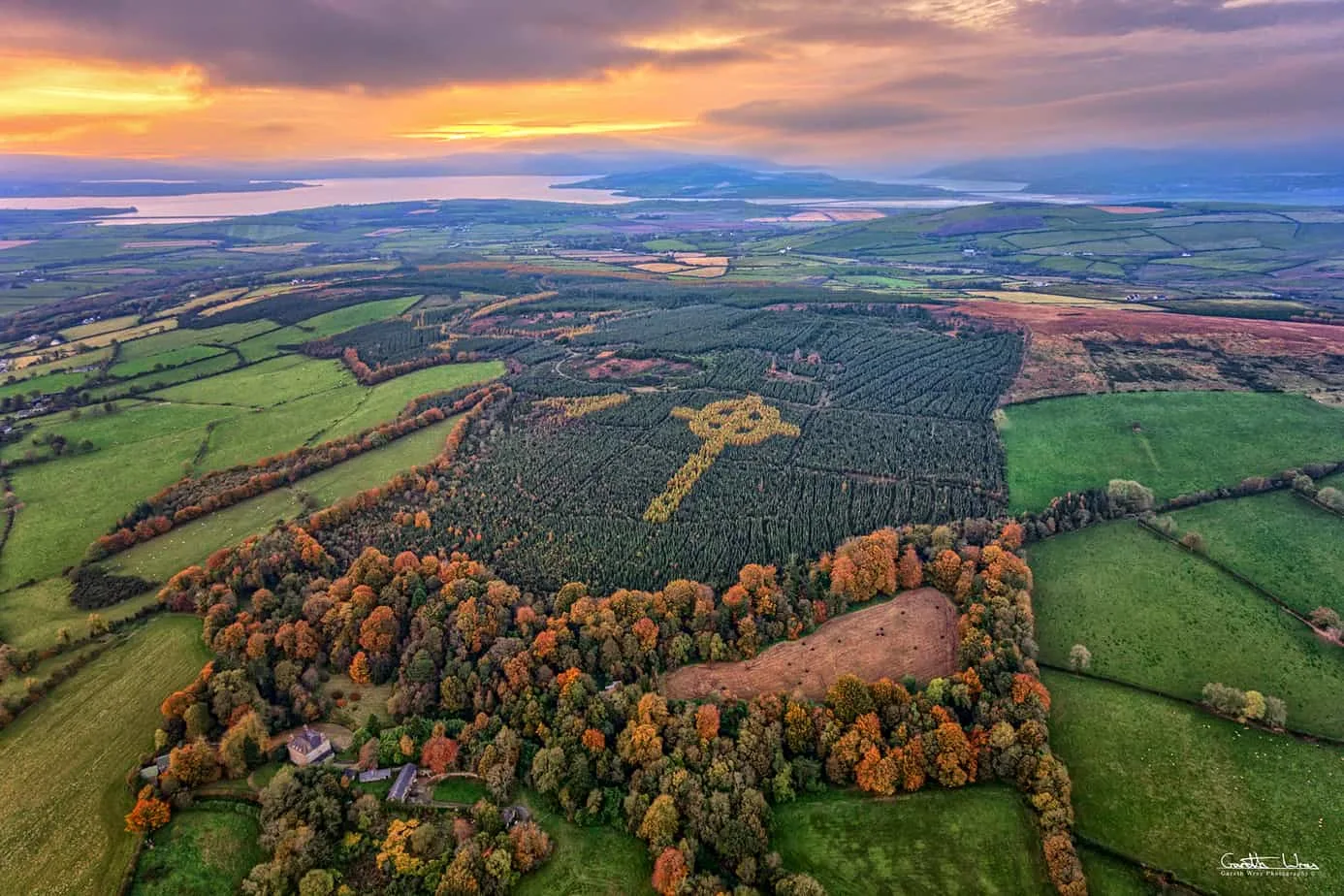

Scott Campbell
Monday 3rd of April 2023
I had a psychic reading years ago and new that the Trinity message that came through, was strong and that it sat dormant ticking away pulling me towards it I believe, until I was ready to fabricate a 3D Trinity knot out of mirror stainless steel inside a circle (220mm dia) that hangs in the sunshine and spins. The circle radiates a reflection of a multi faceted star to about 50m away. The ratio of knot to ring is, I think perfect. A joy to look at from a far and to marvel up close. I have read this article quite a few times getting a better understanding of the significance of my fabrication.
M3
Saturday 8th of October 2022
I ended up here after looking at Tibetan knots and found a common thread... I'm mixed so appreciate the places where I find the folcrums to something within my family. Thank you
Rodney Deese
Tuesday 4th of October 2022
While metal detecting in the motherlode in Northern CA. I found a cross not sure what kind it is maybe you can tell me. Can I send you a picture of it.
Zach Kelly
Friday 2nd of September 2022
This did help me a great deal with the Celtic Dragon sleeve I’m working on to allow me to work in the knots in a proper way and so it isn’t redundant.
Marlene E Gallis-Zimmerman
Saturday 26th of February 2022
I just wanted to say, in a shortened version, that if you are looking for a reason for the spread of these and other symbols, look to the Romans. While conquering the germanic tribes that the celts most likely came from, and while trying to conquer Britain, they took many dare I say the word, slaves. These people are probably responsible for bringing this type of symbolism with them, putting it into their work and daily life, then the Romans liked it and so on..sorry I watch a lot of recent archeological shows and the DNA proof is Changing history!
Irish Around The World
Sunday 27th of February 2022
How interesting! Yes, it certainly is incredible just how much these symbols have been part of history.